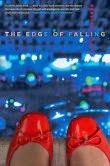I have recently been reflecting on how the WAY WE READ can help us better understand the way we write. I have explored this idea in several presentations, including one at the Oregon International Reading Association Chapter's annual conference and one at the Montgomery County (TX) Book Festival.
Because people seemed to find them useful, I've decided to adapt a couple of exercises I used in my workshops to share here:
1. ON A PIECE OF PAPER, write down:
The title of your favorite book.
What happens on the first page or first chapter OR the most
significant thing you remember about the beginning of the book.
The name of the main character and what he/she wants at the
beginning of the story.
Why you recommend this book to others (if you do)?
Take a look at what you've written. Do you find yourself most drawn to an image? A character? A crisis or other plot element?
2. REREAD THE OPENING CHAPTER of the book you are currently reading, a favorite book or, perhaps one of these titles: VIRTUOSITY by Jessica Martinez, GRAVE MERCY by Robin LaFevers, SPECIAL TOPICS IN CALAMITY PHYSICS by Marisha Pesl, CRANK by Ellen Hopkins, VAMPIRE ACADEMY by Richelle Mead, THE FIFTH WAVE by Rick Yancey.
As you read (to yourself or aloud to friends), ask yourself what is resonating with you in this first chapter along the lines of the questions from exercise 1, above.
When you've finished reading, consider, write down and/or discuss answers to the following question posited by author James Scott Bell in his book PLOT & STRUCTURE:
“What is the story about?
Is anything happening? Why should
I keep reading? Why should I care?…
3. IF YOU ARE A READER, write a paragraph describing what most keeps you reading past the first chapter. Use quotes or references to the book from exercise 2 above.
IF YOU ARE A WRITER, write a paragraph answering the bold red questions from exercise 2 for your own work-in-progress.
4. Which of the two quotes below better describes your understanding of the word PLOT? Write a 2-3 answer defending your quote selection in terms of books you like to read or to write.
Choice A: “Can’t I just write about a fascinating character and see
what happens? YES. The WHAT HAPPENS is your PLOT.” --PLOT & STRUCTURE by James Scott Bell
Choice B: “A metaphor for plot would be ELECTROMAGNETISM…the force
that draws the atoms of the story together. It correlates images, events, and
people. PLOT IS A PROCESS, NOT AN OBJECT.” --20 MASTER PLOTS by Ronald B. Tobias.
I find these exercises instructive because they help readers get to the underlying sensibility of the story. It may help readers think about the kind of writers and writing they like beyond simple qualifiers like genre or plot. They may love great imagery, exploration of a particular type of idea in a history, fantasy or even contemporary/realistic format.
The exercises can help aspiring novelists and/or student writers take a more objective, broken-down look at a piece of writing, identifying elements that need strengthening without taking away from the value of what is already on the page.
What do you think?
 Go figure?!
Go figure?! On another colorful note, I've tinted my Twitter pic blue in honor of Autism Awareness Month--April. Just recently, the news has been full of updates on the increased rate of autism diagnosis, new research on possible causes, and much more. It's an important year to stay aware--so much to learn!
On another colorful note, I've tinted my Twitter pic blue in honor of Autism Awareness Month--April. Just recently, the news has been full of updates on the increased rate of autism diagnosis, new research on possible causes, and much more. It's an important year to stay aware--so much to learn!








